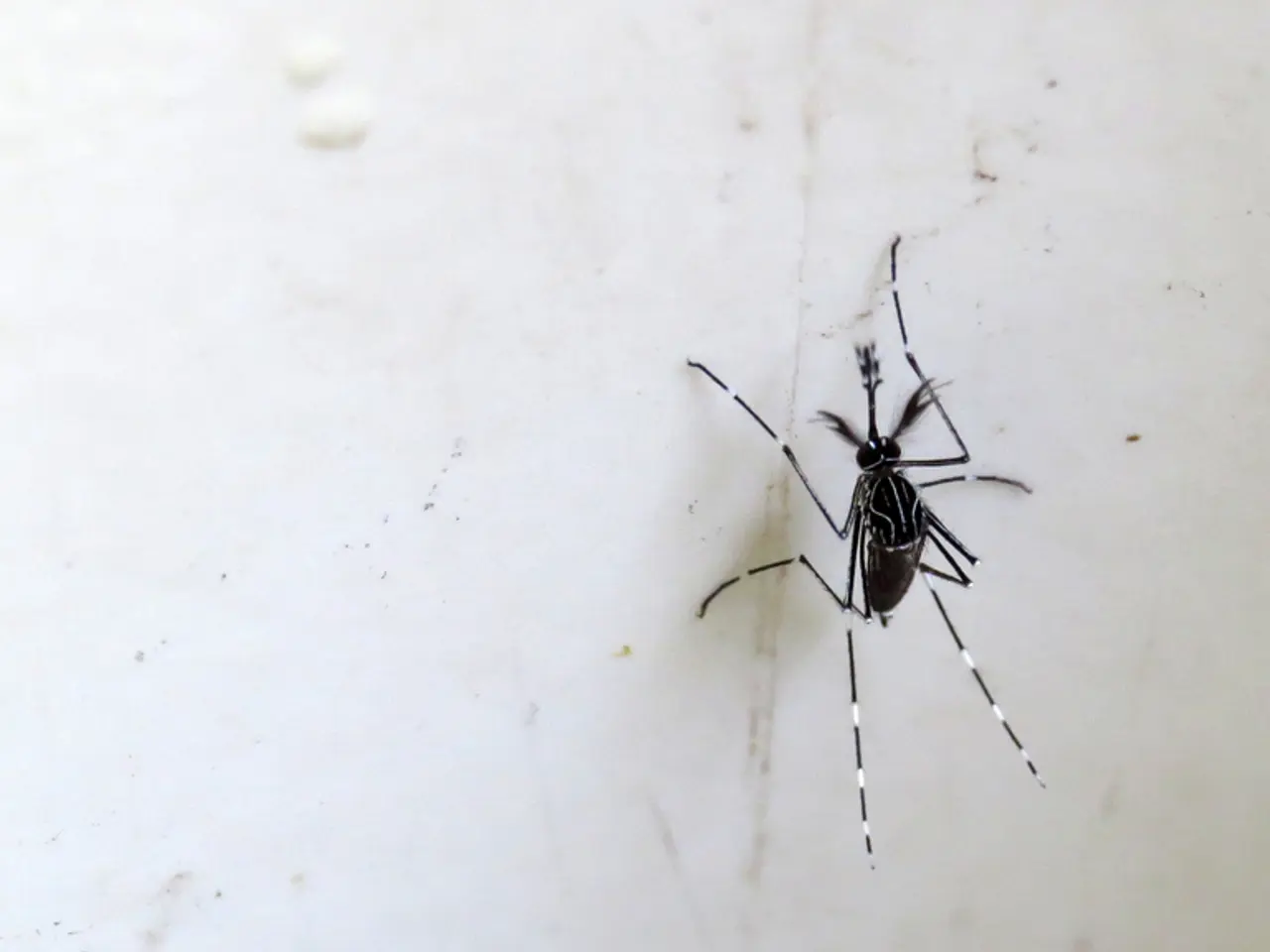World Health Organization counters global threat of Chikungunya virus epidemic - Global alert issued by the World Health Organization over a potential worldwide outbreak of Chikungunya virus, a highly infectious illness.
In a recent development, the Robert Koch Institute in Germany has reported a case of Chikungunya in France, marking the latest in a series of imported cases in Europe. This news comes as the World Health Organization (WHO) urges immediate action to prevent a repeat of the 2004 Chikungunya epidemic, given the similar pattern of the virus spreading today.
The Chikungunya virus, a mosquito-borne infection, causes high fever and severe joint pain that can last for weeks to months in many patients. Although serious cases are rare, they can occur in older or severely ill individuals, with a mortality rate of less than one percent.
In 2004 and 2005, there was a major Chikungunya epidemic in Indian Ocean islands, affecting around half a million people. The case in France was linked to the outbreak on the islands in the Indian Ocean. Similar outbreaks have occurred in parts of Europe, South Asia, and islands in the Indian Ocean, with the virus spreading further into new areas due to climate change expanding mosquito habitats.
The transmission of Chikungunya typically peaks from mid-August to late September, aligning with the mosquito breeding and biting season. Outbreaks may start from imported cases, followed by local transmission when the Asian tiger mosquito, a potential transmitter of Chikungunya, is prevalent. Rising temperatures and increased rainfall expand mosquito breeding grounds, increasing epidemic potential.
To combat the spread of Chikungunya, prevention measures are crucial. These include eliminating mosquito breeding sites, personal protection, community efforts, vector control, surveillance and early detection, healthcare preparedness, global coordination, and, most recently, travel vaccination.
In at-risk countries, eliminating mosquito breeding sites by removing or regularly emptying stagnant water sources is essential. Personal protection can be achieved through the use of mosquito repellents and wearing full-sleeved clothing during peak mosquito biting times. Community efforts involve installing mosquito screens on doors and windows and promoting community awareness and cleanliness to prevent breeding. Vector control measures include targeted community fogging/insecticide spraying when outbreaks are detected, recognizing that fogging alone is insufficient without eliminating breeding grounds.
Surveillance and early detection are key to reducing the virus's basic reproduction number (R_t), a measure of transmissibility, below epidemic levels in about two weeks. Strengthening disease surveillance, rapid case identification, and training healthcare workers to diagnose and manage chikungunya promptly are crucial. Investing in healthcare infrastructure to handle potential large-scale outbreaks and chronic cases is also important.
The WHO calls for urgent actions, including the deployment of experts, enhanced surveillance, and coordinated vector control in countries with Aedes mosquitoes to prevent large epidemics. Global coordination is necessary given that Chikungunya has been detected in 119 countries, putting 5.6 billion people at risk.
The current global situation is critical, with Chikungunya circulating in over 119 countries and local transmission cases reported in Europe. This underlines the urgent need for proactive prevention, especially in countries where the Asian tiger mosquito is established or expanding due to climate change.
In summary, the combination of climate-driven vector expansion and increased human mobility is shaping Chikungunya epidemic patterns. Prevention relies heavily on integrated vector management, community participation, personal protection, and strong public health surveillance systems. The Standing Committee on Vaccination (STIKO) in Germany has recommended a travel vaccination against Chikungunya for the first time in early July. The WHO is observing the spread of Chikungunya in various regions, including the Indian Ocean, Madagascar, Somalia, Kenya, and Southeast Asia. The Asian tiger mosquito, a potential transmitter of Chikungunya, is present in Germany.
- The World Health Organization (WHO) warns of the risk of a worldwide chikungunya epidemic due to the similar pattern of the virus spreading today, similar to the 2004 Chikungunya epidemic.
- Science plays a crucial role in understanding the medical-conditions associated with the Chikungunya virus, including high fever and severe joint pain that can last for weeks to months in many patients.
- Climate change is expanding mosquito habitats, leading to the spread of Chikungunya further into new areas, as shown by the increased number of outbreaks in Europe, South Asia, and islands in the Indian Ocean.
- Mental health and environmental science are equally important as the ongoing Chikungunya epidemic, with a need for strong public health surveillance systems and community participation in prevention measures.
- The European Union's Agency for Safety and Health at Work, focusing on health-and-wellness, fitness-and-exercise, and space-and-astronomy, may also have a role in educating the public on the measures to prevent the transmission of Chikungunya and other chronic diseases.




